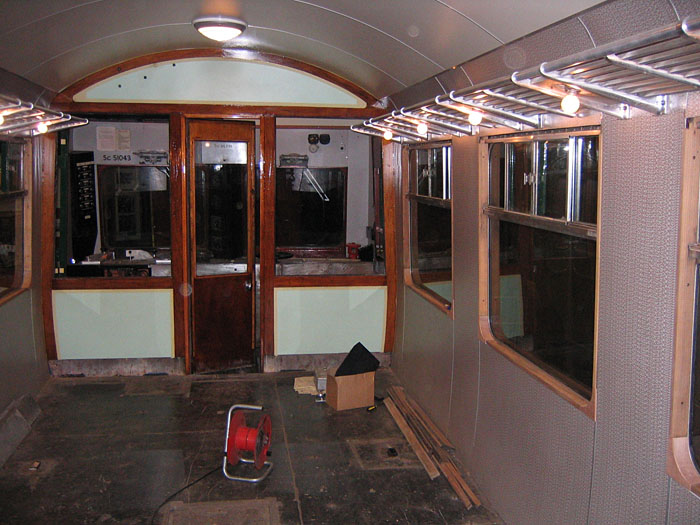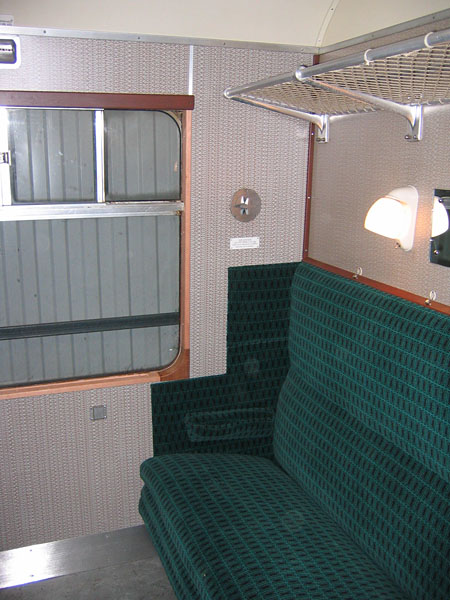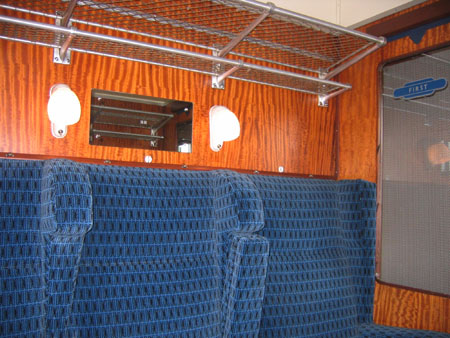Sign In
Remember Me
The interior was virtually completely destroyed during asbestos removal. We had been able to remove the seats, some internal fittings such as woodwork, mirrors, luggage racks, light fittings, etc, but we were not able to remove and save any of the internal Formica panels, as this would have exposed asbestos.
The sight we met when first entering the unit following the first asbestos strip was not a heartening one. The interior as we knew it was gone for ever and it became very clear just how much of a task the restoration would be. The asbestos removal contractors had underestimated the difficulty of the job and as the job had progressed, they had become less concerned with saving the panels from damage as originally agreed, than finishing the job at the minimum possible cost.
Exposure of the inside of the steel structure had also revealed how much the vehicles had suffered from corrosion, and it became clear that this restoration was going to take a lot longer than originally anticipated...
Everything you see inside the train today has been completely installed from scratch.

This shows the front saloon of Sc51043 following asbestos removal.
Or rather – where the front saloon used to be……
The asbestos removal contractors painted the interior in the white paint to seal any last fibres. The extent of the corrosion can be seen by the rust seeping through the white paint.
Bodywork repairs required vehicle be further dismantled by removing every door and window.

Sc51017 interior takes shape at Butterley in June 2007. This shot gives an idea of the construction of the interior as many different stages in construction can be seen:
Literally hundreds of shaped wooden sections are bolted to studs welded to the metal bodyside framing (painted in a white intumenscent paint). These are shaped to the interior profile before aluminium sections are screwed to the surface. These are designed to hold the formica panels (laminated to hardboard) in place.
Glass fibre insulation replaces the original sprayed asbestos.

For comparison, Sc51043 front saloon is slightly further advanced. All formica has been fitted and the window frames have been sanded down, cut to size and trial fitted.
Lighting in the saloon ceiling and luggage racks has been fitted, although we have left off the lampshades until the rest of the installation work is finished.
The main work still to be completed when this view was taken was installation of aluminium kickplates, cab windows, linoleum flooring and seating.

The fully restored interior of Sc51043, looking towards the rear of the vehicle on the day of the train’s first revenue earning trip since asbestos removal destroyed the interior.
As you can imagine, the satisfaction felt by the volunteers whilst travelling in the restored interior was immense.
We still have to undertake this work on the last surviving E&G buffet – can you help?


Here we see two of the compartments from Trailer Car Sc59404. The 1st class compartments have blue moquette. The green material identifies one of the 2nd class (smoking) compartments. The single non smoking compartment has tan coloured moquette. The distinctive reproduction material had to be specially remade for the society by the original manufacturer. Blackpool Trimshops made a nice job of recovering the original cushions and frames.
The second class compartments have the same formica pattern as the power car saloons. The first class compartments have a mahogany veneer. Some of this had to be replaced, but we attempted to retain as much of the original material as possible. After much cleaning and sanding we were able to restore the veneer to an acceptable finish.
All of the compartments are fitted with luggage racks, reading lamps and mirrors.
The work involved in restoring the compartment vehicle was considerably greater than the saloons of the two power cars, but the end result is a very pleasing vehicle to travel in. Swindon was the only manufacturer to produce compartment designs and our Class 126 is the only DMU with compartment accomodation to survive.